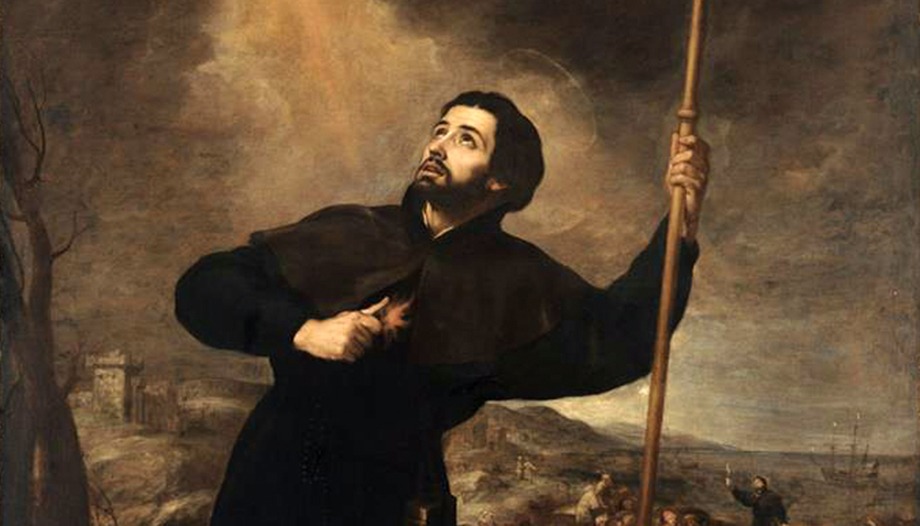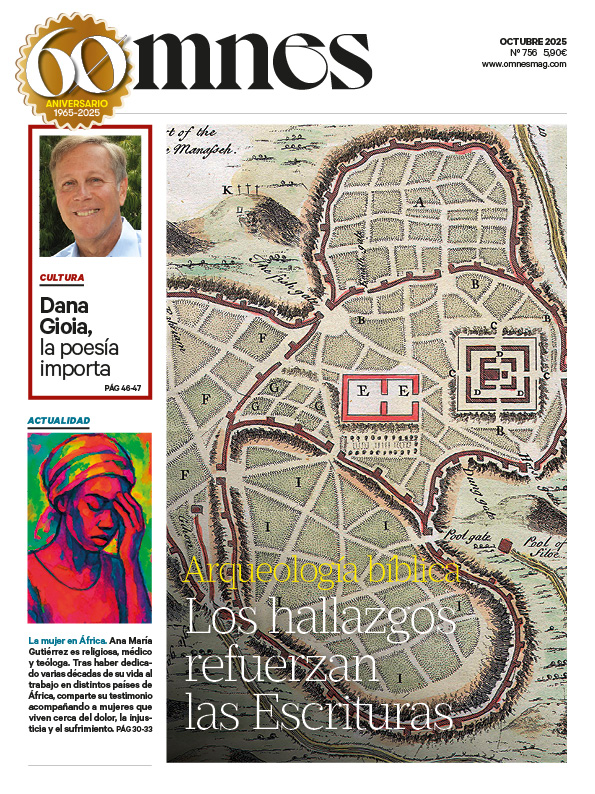Francisco was born in the castle of Javier (Navarra) on April 7, 1506. Son of Juan de Jaso and Maria Azpilcueta. He was the youngest of five siblings. His mother, a very pious woman, knew how to transmit this value to her son and instilled in him a great devotion to Christ represented in an image that is still venerated today in the chapel of the castle.
At the age of 18 he decided to go to study in Paris where he studied Latin, Humanities and Arts. He stayed at the Colegio Mayor Santa Bárbara, where he shared a room with Pedro Fabro and later on with Ignatius of Loyola. He was a good student and in 1529 he passed the Bachelor of Arts exam at the age of 23. That same year his mother died. The following year he obtained his Bachelor of Arts degree. From now on he could be called Master Francisco. For three years he taught philosophy at the college of Beauvois and, in the meantime, he studied theology.
He enjoyed excellent human qualities: clever, a great athlete and an amusing young man; both because of his family's position and his own ability, he was in an excellent position to climb to honorary positions. Little by little Ignatius of Loyola won him over and introduced him into the circle of his friends. He often repeated to him the phrase from the Gospel, "Javier, what good is it for a man to gain the whole world, if in the end he loses his soul?" This led him to an authentic conversion that was very well known in the environment in which he moved.
He then began a new way of life with other young people of Paris with the same concerns, and on August 15, 1534, at the age of 28, he made his vows in Montmatre with his first companions. In September he withdrew for the Spiritual Exercises, finished his theological studies and moved with his eight companions to Venice in 1537. There Ignatius of Loyola was waiting for them with the intention of embarking for the Holy Land. The war with Turkey prevented the departure of the ships and so they opted to work with the sick in the hospitals of Venice. They then went on pilgrimage to Rome where they placed themselves at the disposal of the Roman Pontiff. The Pope received them and granted them permission to be ordained priests and to go on pilgrimage to Jerusalem. On June 24 of the same year, Xavier was ordained a priest in Venice.
The following two years (1538-1540) were decisive in the life of this group of young priests. They wanted to work in the Church and dedicate themselves to helping people, and they wanted to do it as a group in the style of the religious orders, but with more agility, to be where they were most needed at any given moment. On September 27, 1540, Pope Paul III approved the nascent Society of Jesus, in which Xavier played a very important part. Ignatius of Loyola was named Father General and Francis the first secretary and right hand of Ignatius.
The ambassador of Portugal, Pedro de Mascareñas, asked the Pope that year to send missionaries to the East. Simón Rodríguez and Nicolás Alonso de Bobadilla were chosen, but before starting the trip, Bobadilla became seriously ill and at the last minute it was decided that Javier would go. Thus his missionary vocation was born. On April 7, 1541, Javier's 35th birthday, the ship left Lisbon for India. The voyage was long and eventful. At the end of August they arrived in Mozambique, where they stayed for six months because of the monsoon. Xavier devoted himself mainly to caring for the sick. On May 6, 1542, they finally arrived in Goa, the capital of Portuguese India.
He began there working on the coast of Pescheria with the paravas, pearl fishermen, developing an enormous and varied work: he acted as mediator in the war with the Badagas, which was very bloody; he made numerous trips: to Comorin, Travancor, Ceylon..., and to the East coast of India. From April to August 1545 he stayed in Sao Tome, where the tomb of St. Thomas the Apostle is located, and decided to travel even further East, to Malacca and the Molucca Islands, in Indonesia, where he spent two years (1545-1547) visiting several islands: Amboino, Ternate, Moro... He returned to his base in Goa, and stayed there for a year and a half, while he prepared his trip to Japan, where he stayed for three years. He visited several cities: Kagoshima, Yamaguchi, Miyako, Kyoto... in the midst of great difficulties of language, political situation, climate, etc. He returns to He returned to Goa, where he had a few months of intense work: he had been appointed Provincial of India. He wrote many letters and solved serious problems, since there was a lack of missionaries and many conversions. In spite of the concrete needs of India, he thought it was essential to open up to China. It was like going to the heart of Asia. On July 21, 1552, he arrived in Singapore, and soon after reached the island of Sancian, 30 leagues from the coast of China and the city of Canton. There he encountered many difficulties and many of those who followed him abandoned him; Xavier was left ill and accompanied only by his Indian servant and the Chinese Antonio.
On December 3, 1552, Francis Xavier died in Sancian, at the gates of China. His only companion and witness, Antonio, tells it like this: "On November 21 he fainted while celebrating Mass. On December 1, he regained consciousness and could be heard repeating: "Jesus, Son of David, have mercy on me". "O Virgin, Mother of God, remember me.". In the early morning of December 3, with the crucifix in his hands and the name of Jesus in his mouth, he surrendered his soul and spirit into the hands of his Creator". He was 46 years old. Two years later his body was transferred to Goa.
On March 12, 1622 he was canonized by Pope Gregory XV. That same year the Deputation of the Kingdom of Navarre named him its patron saint; the Cortes ratified the oath two years later. In 1657, by pontifical decision, St. Fermin and St. Francis Xavier were named co-patrons of the Kingdom of Navarre. In 1927 Pope Pius XI named him, along with St. Teresa of the Child Jesus, patron of the missions.







